Protect your seedlings with 5 cold frame ideas to use in your backyard
Choose to extend the growing season with our expert cold frame ideas

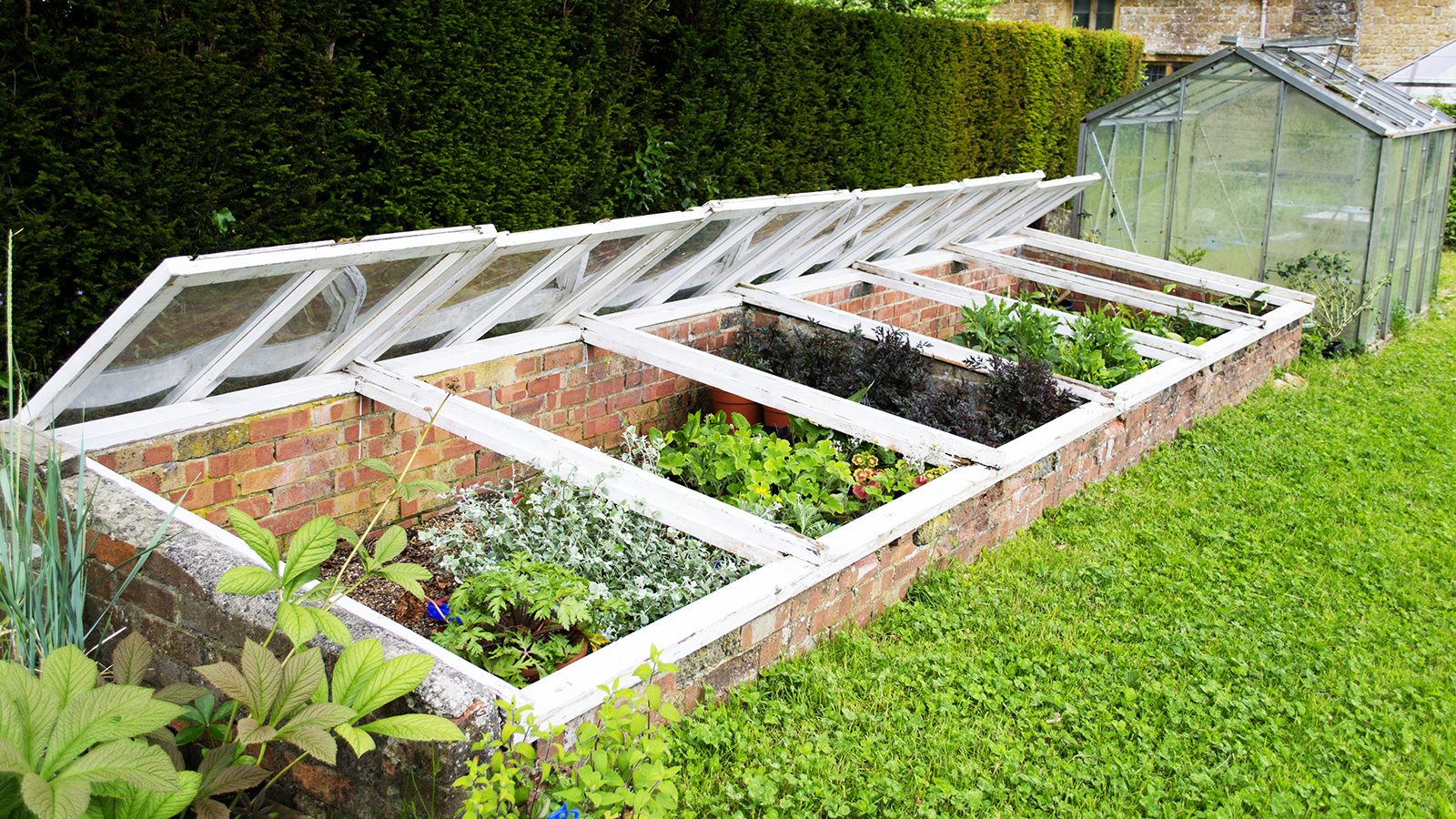
If you're looking for ways to protect your plants or seedlings during the colder months but don't have the space or budget for a greenhouse, cold frames or cloches are a great alternative for small gardens.
A cold frame is essentially a mini greenhouse and there are lots of benefits to using one in your garden, particularly if you're new to growing. They're portable and great for small spaces, or they can be a good way to extend your growing space if your greenhouse ideas are already full to the brim.
A cloche, on the other hand, does a similar job, but on a much smaller scale. It derives from the French word for ‘bell’, and can be placed on individual plants to protect them from cold temperatures.
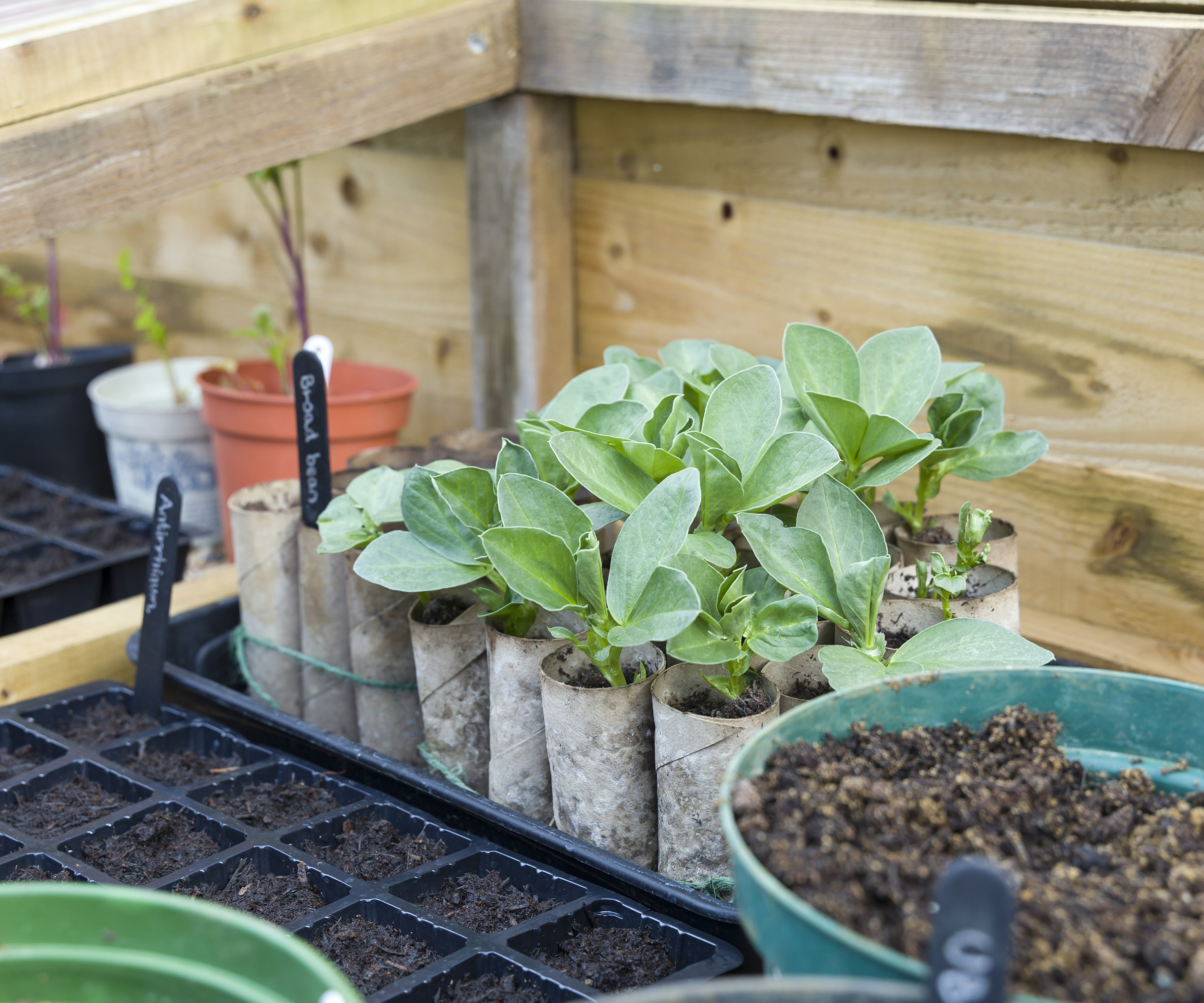
Cold frames will provide protection for your seedlings
What is a cold frame?
'A cold frame is a tool used in gardens and farms to help extend the growing season during cold weather,' says Katie Burdett, organic gardener and greenhouse expert.
'It can also be used to start and/or harden off seedlings. Think of a cold frame as a mini greenhouse. They can be made entirely of polycarbonate plastic, or they can be home-made with a wooden frame and an old window on top,' says Katie.
There's no need to learn how to heat a greenhouse when you are using a cold frame. Here are five ideas to get your started.
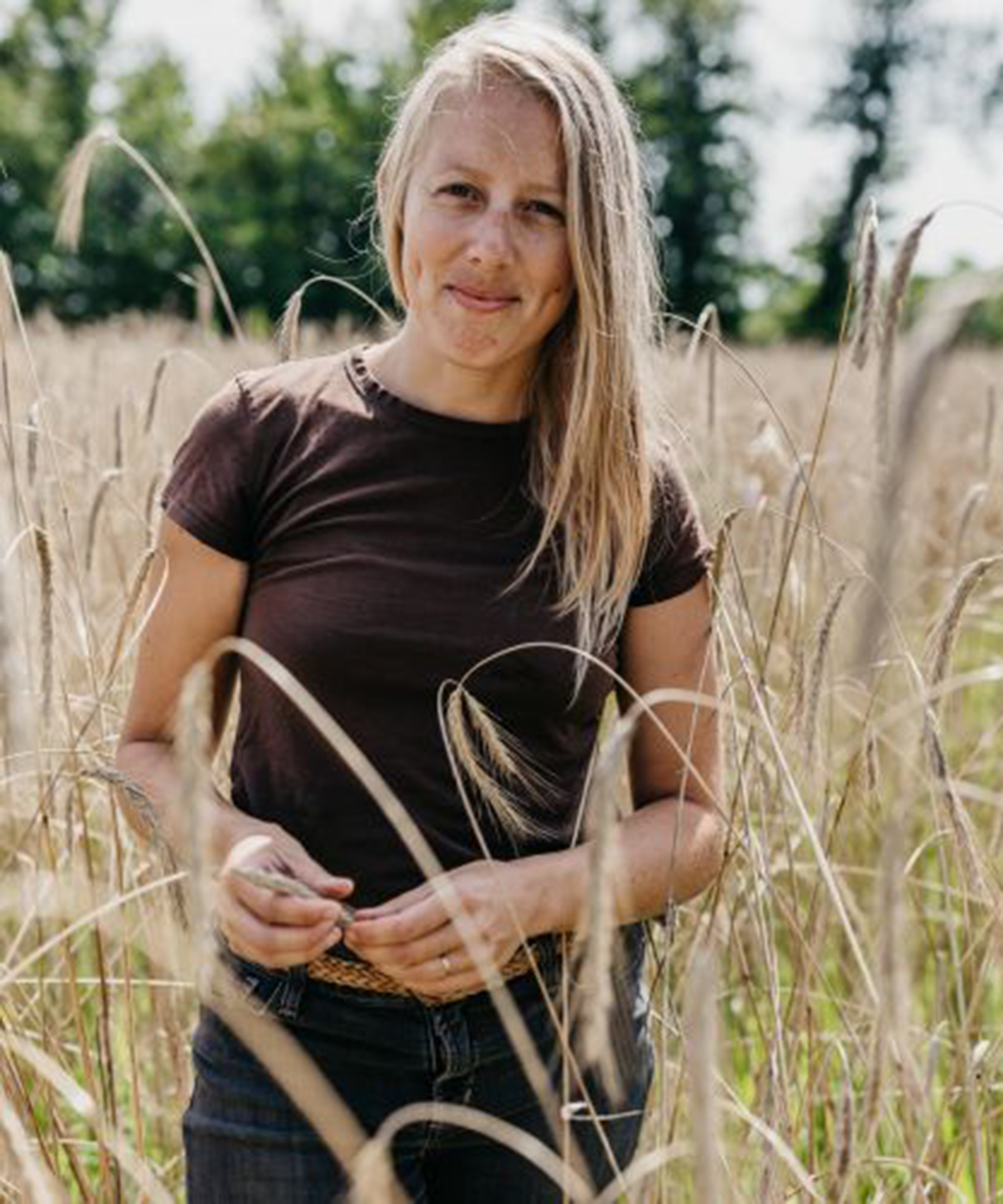
Katie lives along the lake in Southwest Michigan with her husband and their greenhouse, Gertrude (Gertie for short). She has been growing veg organically there for over 12 years
1. Raised off the ground
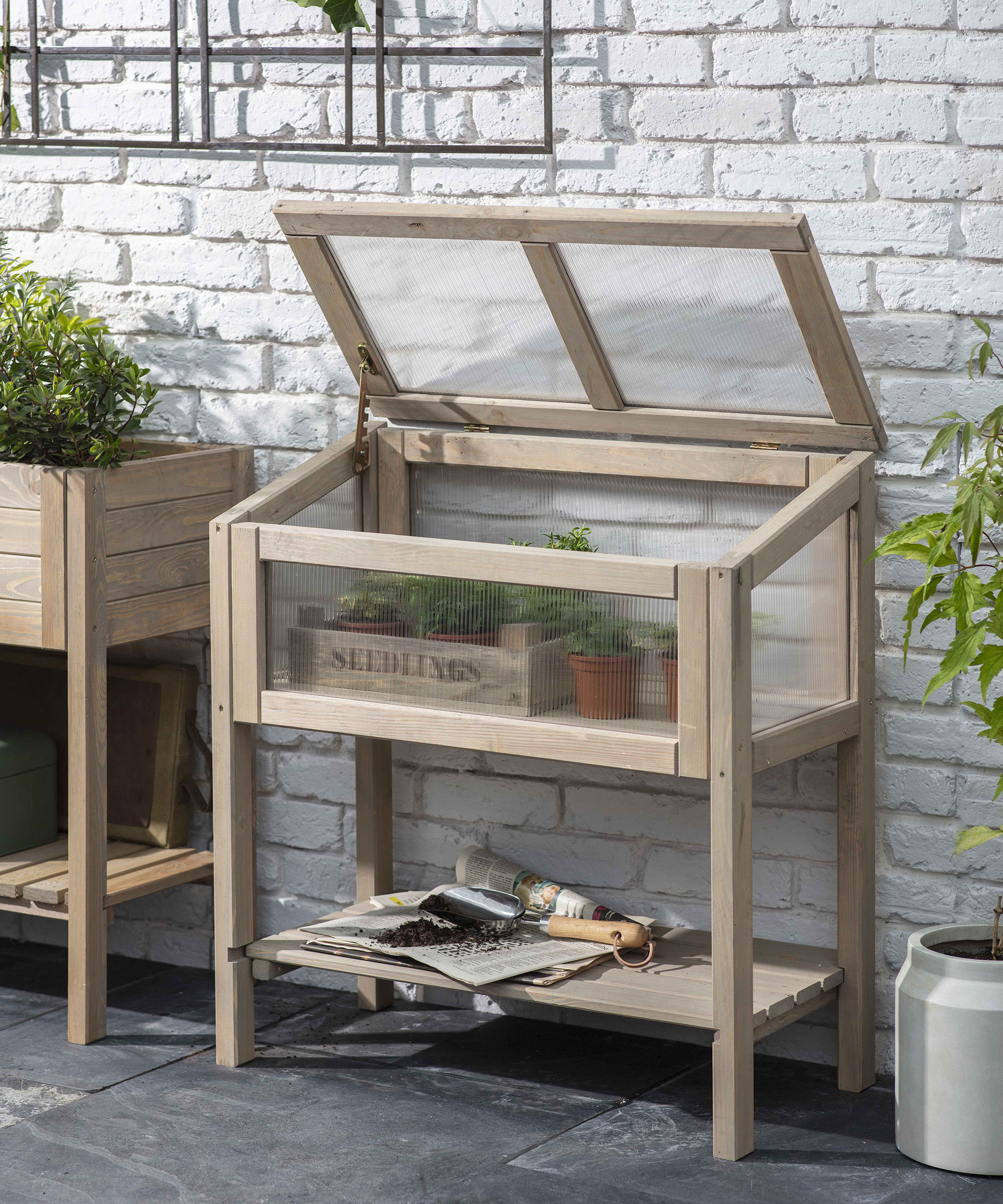
Raised options are great for small courtyards
If you want to protect your back when planning a greenhouse, go for a raised cold frame as it means you won't have to spend all your time bending down to tend to your seedlings. A raised design gives you plenty of easily accessible growing space at a comfortable height.
Design expertise in your inbox – from inspiring decorating ideas and beautiful celebrity homes to practical gardening advice and shopping round-ups.
They usually have a hinged lid and sides that feature glass or plexiglass to allow light in whilst keeping the cold and rain out. Look for a design with a shelf underneath as it will give you some much needed storage for your pots, plants and watering can.
2. Split lid solutions
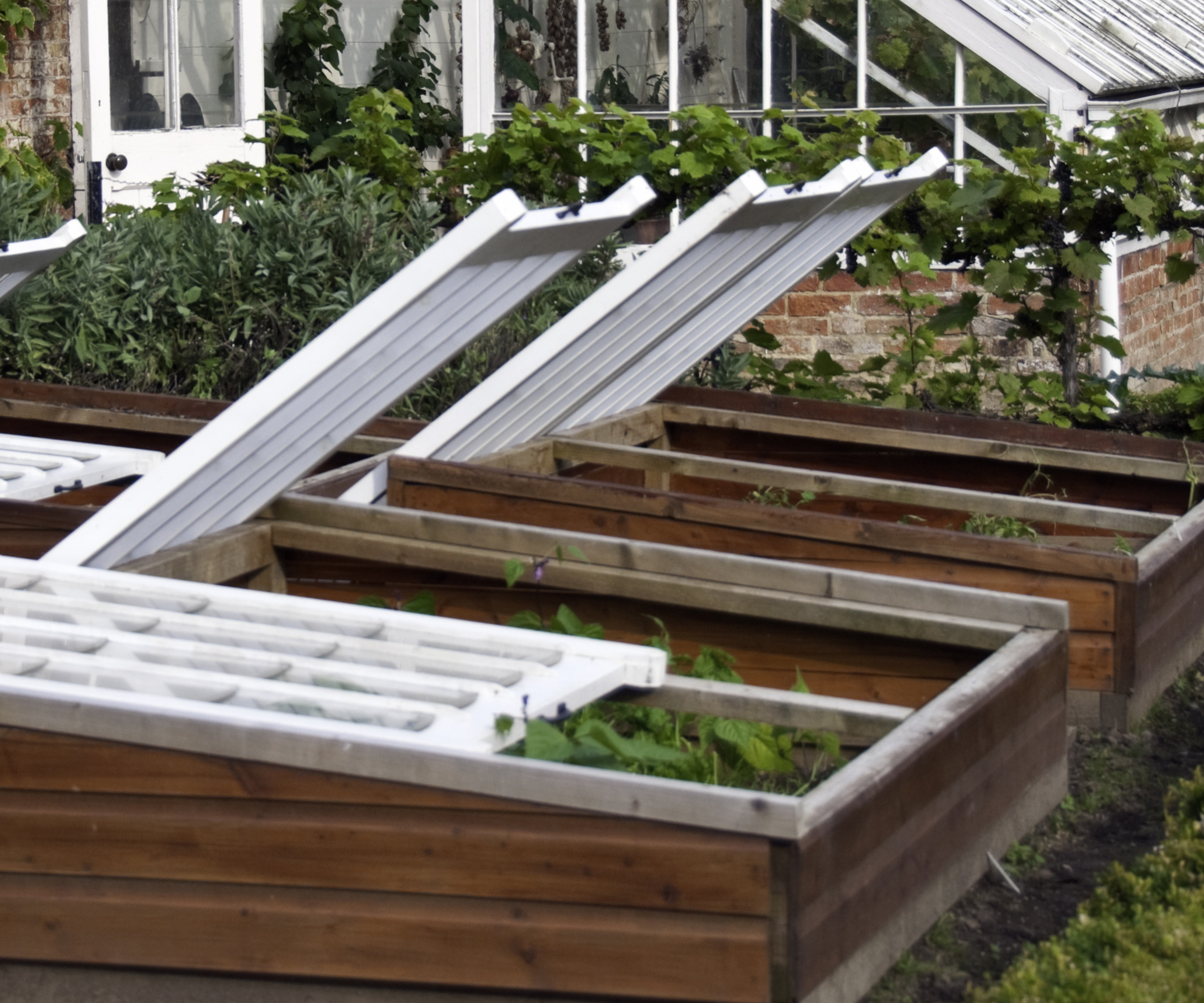
Split lids give you more growing options
A design with two independently opening lids is a good option – you can let extra light and air into one side as and when needed without compromising the seedlings or plants on the other side.
A lid with two height settings for the pane is a useful option for similar reasons. Always look out for a cold frame that's pressure treated to protect against rot, as this will also ensure it lasts longer, especially if it’s placed directly on the ground.
3. Lightweight for maximum flexibility
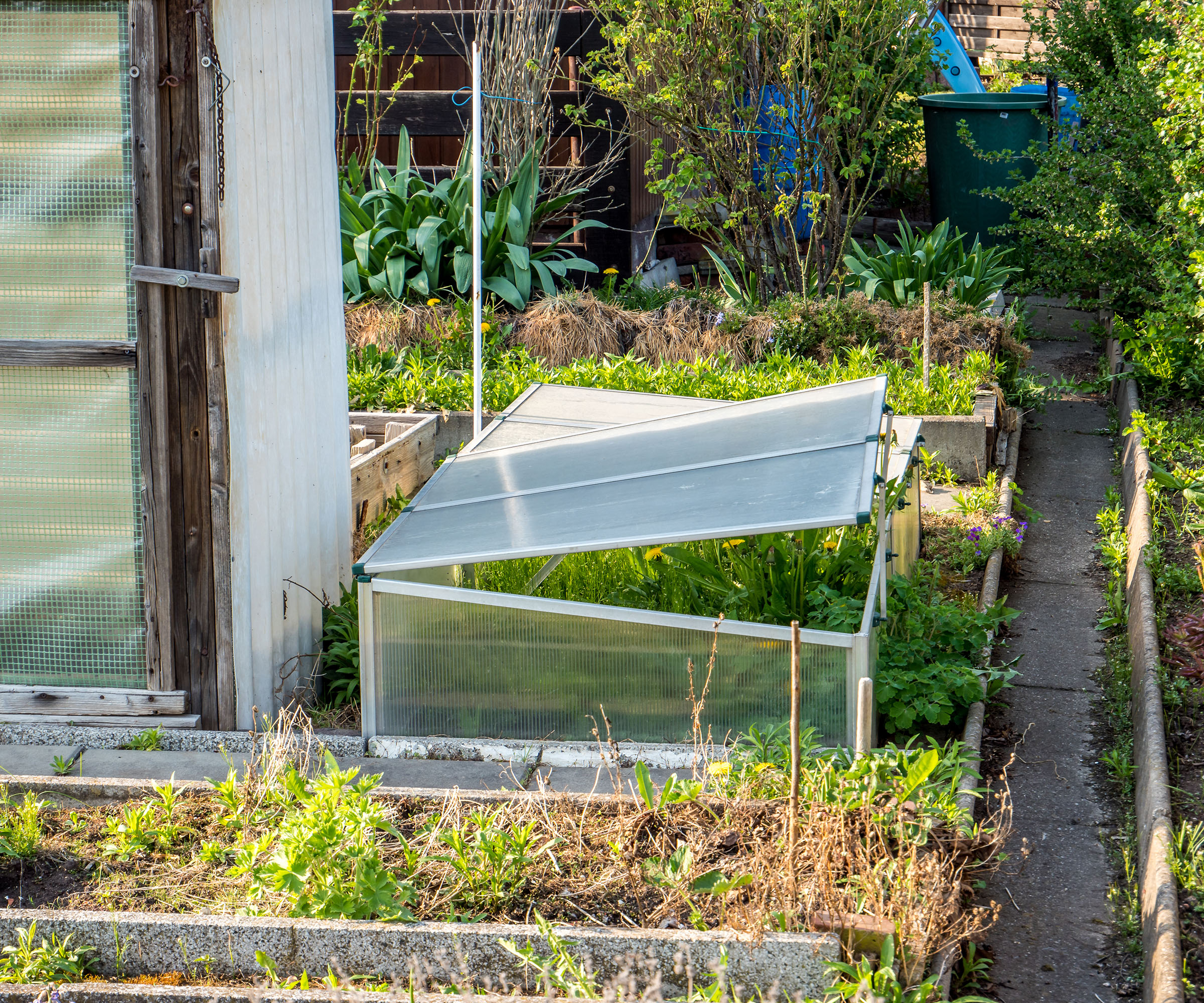
Lightweight options are less robust but more mobile
If you think you’ll want to move your cold frame to different positions in the garden, for example as the sun drops to a lower level in winter, then choosing a design made from a lightweight material like aluminum is worth considering.
Going for a design with polycarbonate panels instead of glass will also keep the weight down. Our top tip? A hinged lid is always worth it, even if it costs you a little more as you need to be able to get your plants in and out with both hands – holding the lid with one hand and trying to pick up plants with the other is often trickier than you might think.
There are plenty more ideas for small spaces in our best mini greenhouses feature.
4. Smaller structures for salad

Salads are some of the best vegetables to grow in a greenhouse. You can also grow them in a cold frame or, smaller still, using a salad cloche.
A salad cloche does what it says; you can use it for growing herbs in a greenhouse as well as growing lettuce and salads, and some come on their own raised bed so you can place it outside the back door or even on a balcony.
Cleverly designed, they feature convection ventilation which allows warm air to circulate around the inside of the cloche, then you can often remove the side glass during summer months to create a sun trap, or to allow rain to water your salad.
5. Individual plant protectors

Cloches will also protect plants from slugs
The original cloche was domed and used to protect individual seedlings and young plants from light frosts and cold winds, and not forgetting pesky pests like birds, slugs and squirrels.
You can still get this shape, more often in toughened plastic, such as this pack of cloches available from Amazon, glass or bamboo, and if you get different sized ones you can use them for various stages of plant growth. A top tip is to line them with fleece or straw to warm up soil for those fresh and frosty mornings.
FAQs
What plants can be grown in a cold frame?
'The best plants to grow in a cold frame are low-growing, cold tolerant plants like lettuces, spinach, cilantro, dill, parsley, mache and mustards,' says Katie Burdett, organic gardener and greenhouse expert.
'Cold frames can also be used as a temporary home to harden off seedlings,' she says.
What materials can be used for a cold frame?
'A cold frame that is made entirely from polycarbonate plastic will diffuse more light and be more lightweight. A cold frame made from wood and glass will be heavier and allow less light in,' says Katie Burdett, organic gardener and greenhouse expert.
'Regardless of the material, the cold frame will need ventilation on sunny days (even when it's cold) so plan ahead to use an automatic opener or be available to prop it open,' she says.
Cold frames can be used in addition to greenhouses or instead of. Whatever you choose, they are ideal components to factor in if you're planning a kitchen garden.

Sophie has been an interior stylist and journalist for over 20 years and has worked for many of the main interior magazines during that time, both in-house and as a freelancer. On the side, as well as being the News Editor for indie magazine, 91, she trained to be a florist in 2019 and launched Flowers Inside My Head where she curates beautiful flowers for modern weddings and events. For Homes & Gardens, she writes features about interior design – and is known for having an eye for a beautiful room.